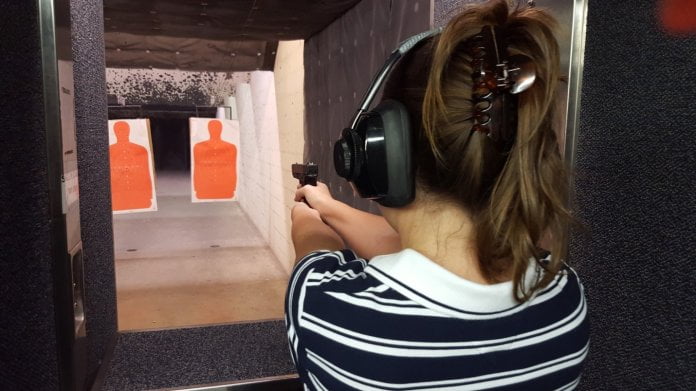Over 50 million Americans take part in target and sport shooting activities.It’s clear we love to spend our weekends honing our craft at the gun range but it’s important to stick to gun range rules so everyone stays safe.
Don’t know the most important firing range rules? No worries, we’ve got you covered. Here are the top nine.
Table of Contents
Keep the Muzzle Pointed in a Safe Direction
One of the most important firearm safety rules is to never point your gun’s muzzle at something you don’t intend to shoot.
Remember this when you’re loading or unloading your firearm. A safe direction means you are taking into account potential ricochets and the fact that bullets are powerful enough to tear through walls.
Instead, keep the muzzle pointed at the backstop or bullet trap to avoid potential accidents.
Learn the Right Mechanical and Handling of Your Firearm
Before firearm training, you must remember that all guns differ.
You must familiarize yourself with the type of firearm you’re using, the firearm safety rules for loading, unloading, carrying, and handling the gun.
Read and refer to the instruction manual you’ve received with your gun. If you’ve lost the manual, contact the manufacturer for a free copy.
You should also refrain from modifying your guns and have them regularly serviced. Firearms are complex mechanisms, designed by experts, so if you make amendments the gun may not work correctly or become dangerous.
If you’re desperate for a specific modification, check with the firearm’s manufacturer to see if they recommend it.
Use Correct Ammunition
Basic gun safety includes using the right ammunition for your firearm.
Read everything in your gun’s instruction manual and on the ammunition packaging for the specifications. If not, you could destroy your gun or cause a serious accident.
Remember that if the ammunition becomes wet then dispose of it safely. You should examine every cartridge you put into your gun to ensure it’s not damaged or substandard.
Wear Eye and Ear Protection
One of the most obvious gun safety rules is wearing protective gear when you’re at the range. All shooters must wear eye protection and hearing protectors when in action.
Eye protection is crucial when disassembling and cleaning your gun as it prevents any spring tension parts or solvents coming into contact with your eye.
Plus, shooting glasses protect you from twigs, target chips, and falling short. And, obviously, ear protection prevents damage to your hearing.
When your eyes and ears are protected, it’ll make shooting easier and more enjoyable.
Always Stay Alert Around Your Gun Range
One of the top rules for gun safety is to act like your firearm could shoot at any time.
Guns have a “safety” but, in the worst-case scenario, it may not work or the safety may be off when you think it’s on. With this in mind, never touch the trigger unless you plan to shoot and keep your fingers away from it when you’re loading or unloading.
Further, it’s important to know the gun range’s “ceasefire” rules. Some gun ranges allow anyone to call for a ceasefire whereas others only allow the range officer.
Regardless, you must stop shooting, unload, and dismantle your gun immediately. You can’t handle your firearm during this time, firing can only start after the appropriate call by a range officer.
Unload Your Firearm When Not in Use
Another important rule about firearm safety is to keep it unloaded when it’s not in use.
You should only load guns when you’re in the range, ready to shoot. When you’re finished, secure your gun and ammunition in a safe place, separate from one another.
Before you handle the firearm, open the action, and visually check the chamber, receiver, and magazine, so you’re certain it’s empty.
Be Aware of Your Target and Beyond
Don’t shoot unless you know exactly where your shot will strike. Make sure your bullet doesn’t hurt anyone or anything beyond the target otherwise you’ll be responsible.
Never fire at a movement or a noise without being certain about where your target and shot will stop. You should also be mindful of where you shoot from. Your rounds must stay within the range’s confines and only shoot from the firing line.
It’s also important to note that if you shoot at targets on the ground or not at the proper height, rounds may escape the range which could be disastrous.
If Your Gun Fails to Fire, Handle With Care
Sometimes, your gun won’t fire even after pulling the trigger.
If this happens, keep the muzzle pointed in a safe direction and keep your face away from the breech. Now, carefully open the action, unload your gun, and safely dispose of the cartridge.
You must remove the cartridge as it could fire even if you’ve tried to shoot and it doesn’t go off.
The Barrel Must Be Clear of Any Obstructions
Before you shoot, inspect the gun’s barrel for any obstructions.
The smallest bit of mud, snow, or grease can increase pressure in the barrel so it bulges or bursts when fired. As a result, you could seriously injure yourself or others.
Always clean the barrel and check for obstructions with a cleaning rod before shooting. If you notice a strange noise when firing, stop, and check for obstructions.
Those Are Essential Gun Range Rules
Now you know the critical Fire range rules.You must keep your firearm free from obstructions, wear protective gear, and keep the muzzle down when it’s not in use. Remember it’s your responsibility to handle your gun with care so you don’t injure yourself or others. Happy shooting!
Did you find this article helpful? If so, check out our posts on everything from Travel to Payday Loans.
Related Article: Will Democrats Take Away Our Guns


